Drilling in wood processing: what tools are used?
Drilling is a cutting process that uses specific cutting tools, such as boring bits , and is used to make circular holes in solid materials.
In this article, we will look at the wood boring process and the most frequent applications in which this is used.
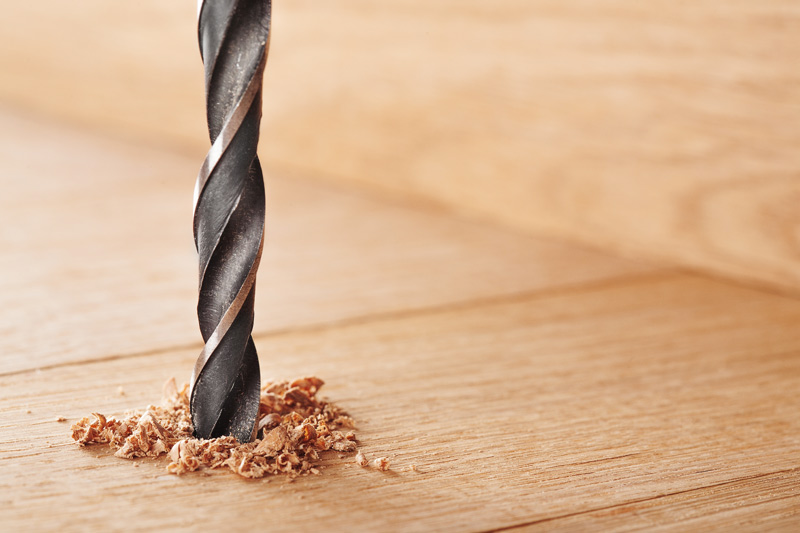
Boring is one of the key operations for companies working in the wood processing sector; it is a fundamental process within the furnishing industry that calls for the highest possible levels of precision, in order to ensure that the various components of a piece of furniture fit together perfectly: creating holes, slots and housings for hinges, locks or shelves requires the use of appropriate machinery, and necessitates specific human skills – those of the machine operator, in this instance – as well as specific tools that are suited to the type of hole to be created.
We will now take a look at some of the topics that could be helpful in understanding the wood boring phase:
- The machines used for boring in small and medium sized companies and large-scale industry applications
- The main types of hole
- Boring bits for wood: types and characteristics
Machines for wood boring: the various types
There are various types of machines for wood boring on the market. In this section, we will provide a brief explanation of the characteristics of some of the main machines for boring used by small and medium companies and large-scale industry in wood processing operations.
Automatic boring machines: these are widely used in furniture manufacturing; thanks to the high level of automation and speed they offer, these machines can produce a large number of pieces per minute with maximum precision and excellent finish quality. The latest technologies used on these machines enable fast programme changes, reducing machine downtime.
Alongside automatic boring machines, we also find semi-automatic boring machines, which can offer maximum flexibility and performance, including for artisan producers or small-medium sized companies.
Numerical control boring machines are widely used in industry, thanks to the fact that they enable hundreds of holes to be created, offering high levels of flexibility in machining operations on panels of various sizes and thicknesses, with machining carried out in real time with no interruptions. Numerical control technology ensures maximum precision and processing without splintering. Despite the fact that these latest-generation machines deliver high performance and maximum precision, the final quality of the boring process is also determined by the type of boring bit used.
Before discussing tools for boring, let’s take a look at a few of the key types of hole that are commonly required.
Types of hole and their function
Wood is a highly workable material that enables holes of various shapes and sizes to be created. There are two main types of hole:
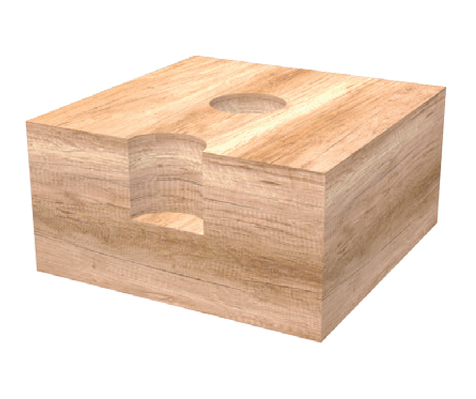
Blind hole is a partial hole in a panel, i.e. a hole that does not penetrate through the entire thickness from one side to another, and is visible from one side only; the dimensions of these holes may vary in accordance with the thickness of the panel and the purpose for which it is to be used. When should a blind hole be used? This kind of hole is usually necessary when fixing the doors of a piece of furniture in place, when creating a slot for plugs or dowels for assembling shelves or in the assembly of the various components of a single structure, such as a wardrobe.
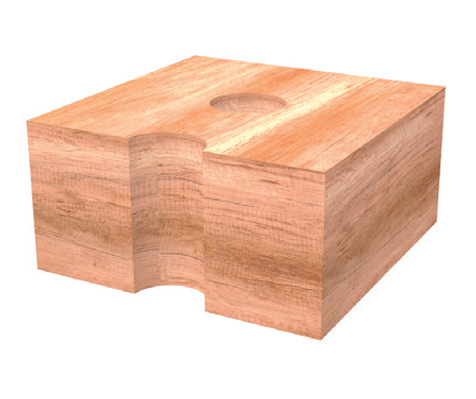
Through hole goes through the panel from one side to the other, and may be created for technical purposes (for example, to allow electrical cables to pass through a panel in a kitchen) or in order to make an opening for a component. Otherwise, this type of hole may simply be made for aesthetic reasons.
The shape of the hole depends on the function that this needs to serve; for example:
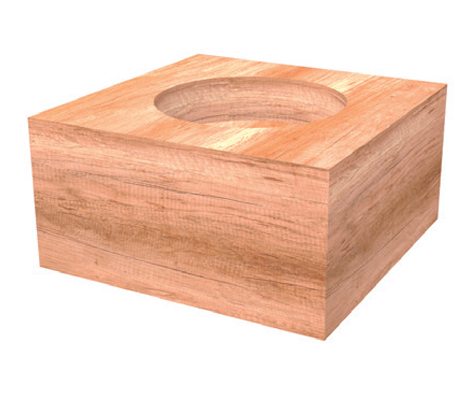
Holes for hinges are specific blind holes created to house hinges
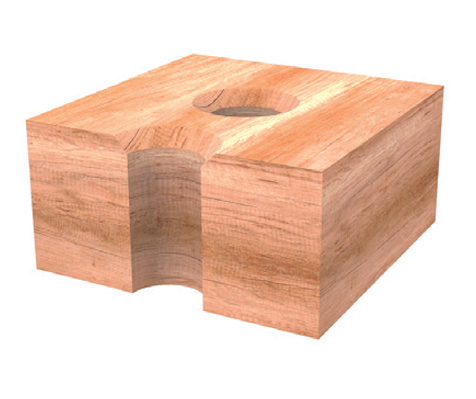
Holes with countersink are conical holes, and these can either be blind or through holes. The purpose of these is to enable a screw or a bolt with a flared head to be inserted, so that the head of the screw is flush with the surface of the panel.
Boring bits for wood: how to choose the right one?
We have just been looking at the various types and shapes of hole, but how do we go about choosing the best boring bit to make these?
A brief aside: compared to other materials such as metal, wood and its derivatives are much softer, and for this reason, wood boring is a simpler, faster process than that required for machining other materials, even though it nonetheless remains a demanding operation that requires specific technical knowledge. The precision with which the holes are made determines the stability and durability of an item of furniture, and the slightest inaccuracy can result in a badly finished panel.
One of the most critical aspects of this process is to ensure that the entry and exit holes are extremely clean, with an optimal finish, with no “burning” of the material. These two key pitfalls can be avoided by using appropriate speed parameters and boring bits with geometries and teeth that are suited to the processing operation to be performed.
As we saw previously, latest-generation wood boring machines offer high performance and are capable of creating a large number of holes with great precision, but the finish quality is largely dependent on the tool that is used.
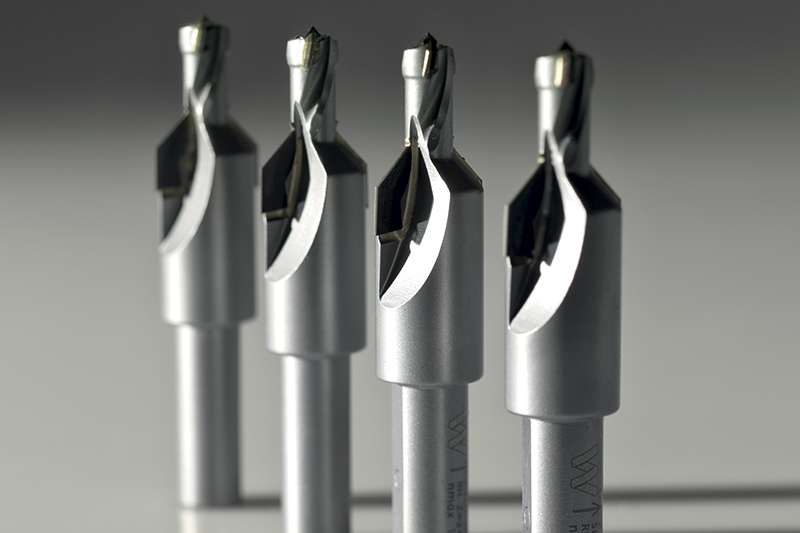
When choosing the latter, it is therefore essential to rely on tool manufacturers with proven experience who can provide the user with guidance as to the types, shapes and sizes suitable for them, in accordance with the purpose of the machining operation they intend to carry out, the degree of precision they wish to obtain and the type of material to be processed. Other parameters that must be taken into consideration include the part of the panel to be processed, the grade of finish on the hole that the user wishes to achieve and the depth of the hole itself. All of these variables affect the shape, material and geometry of the cutting edges of the boring bits.
Boring bits can be divided into various categories on the basis of the type of hole that they are used to create. So, we are talking about:
- Bits for blind holes
- Bits for through holes
- Bits for hinges
- Bits with countersink for creating countersunk blind and through holes
These types of bit may have cutting edges in polycrystalline diamond (PCD), tungsten carbide (HW) or solid tungsten carbide (HWM).
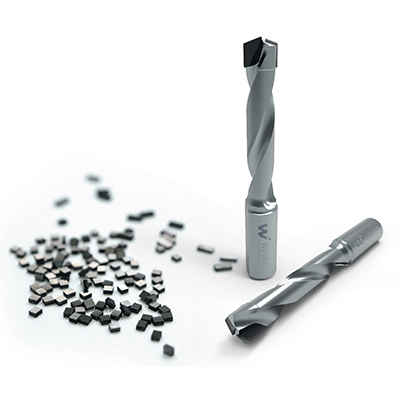
PCD or tungsten carbide boring bits
The decision of whether to use a PCD or tungsten carbide boring bit may vary according to the following characteristics. PCD boring bits offer high resistance to wear, and as such, are often used for particularly abrasive materials and for repeated boring of chipboard, MDF, coated MDF and melamine materials. These bits may have a body made from tungsten carbide (HW) or solid tungsten carbide (HWM).
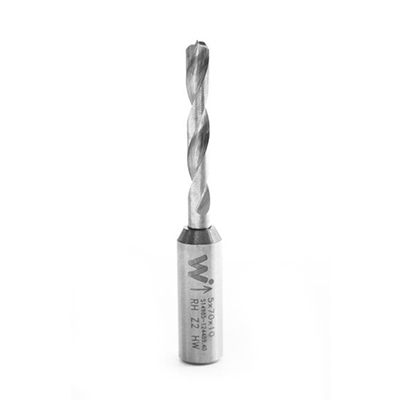
Boring bits in HW or HWM
Boring bits in HW or HWM are generally the best solution for processing solid wood, its derivatives and laminated materials.
For more than 20 years, Wirutex hi-tech tools has been producing a wide range of boring bits for boring machines and CNC machining centres with cutting edges in polycrystalline diamond (DP), tungsten carbide (HW) and solid tungsten carbide (HWM). Visit the section dedicated to boring bits to select the tool best suited to your requirements.

